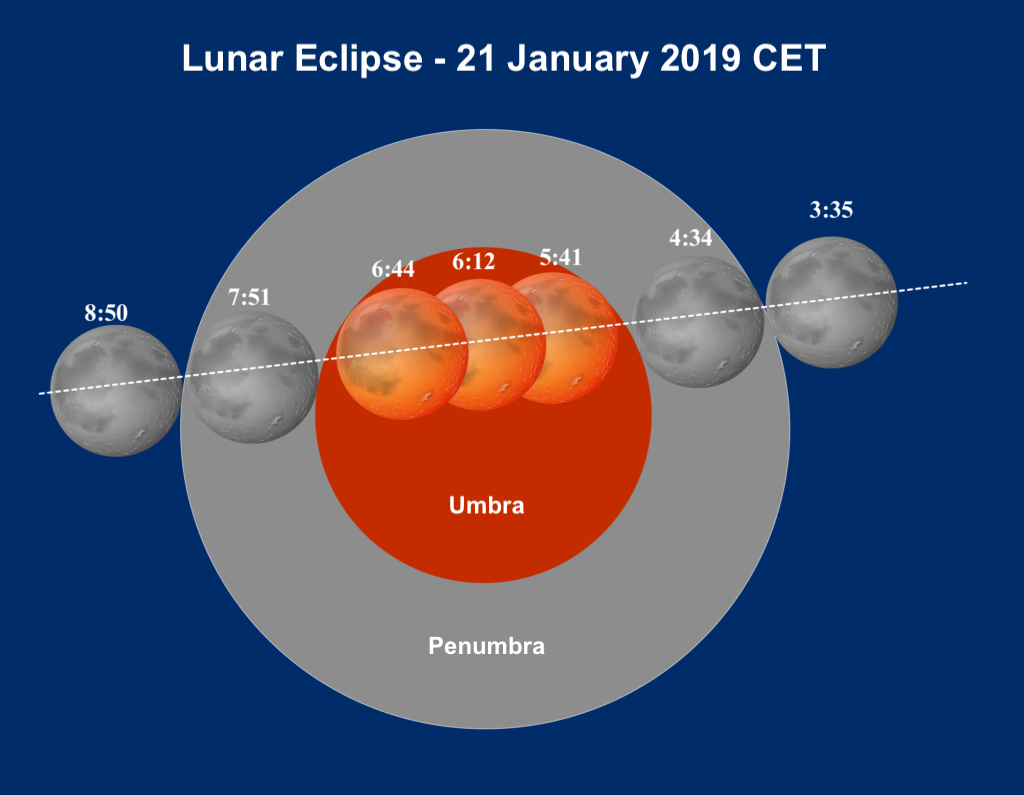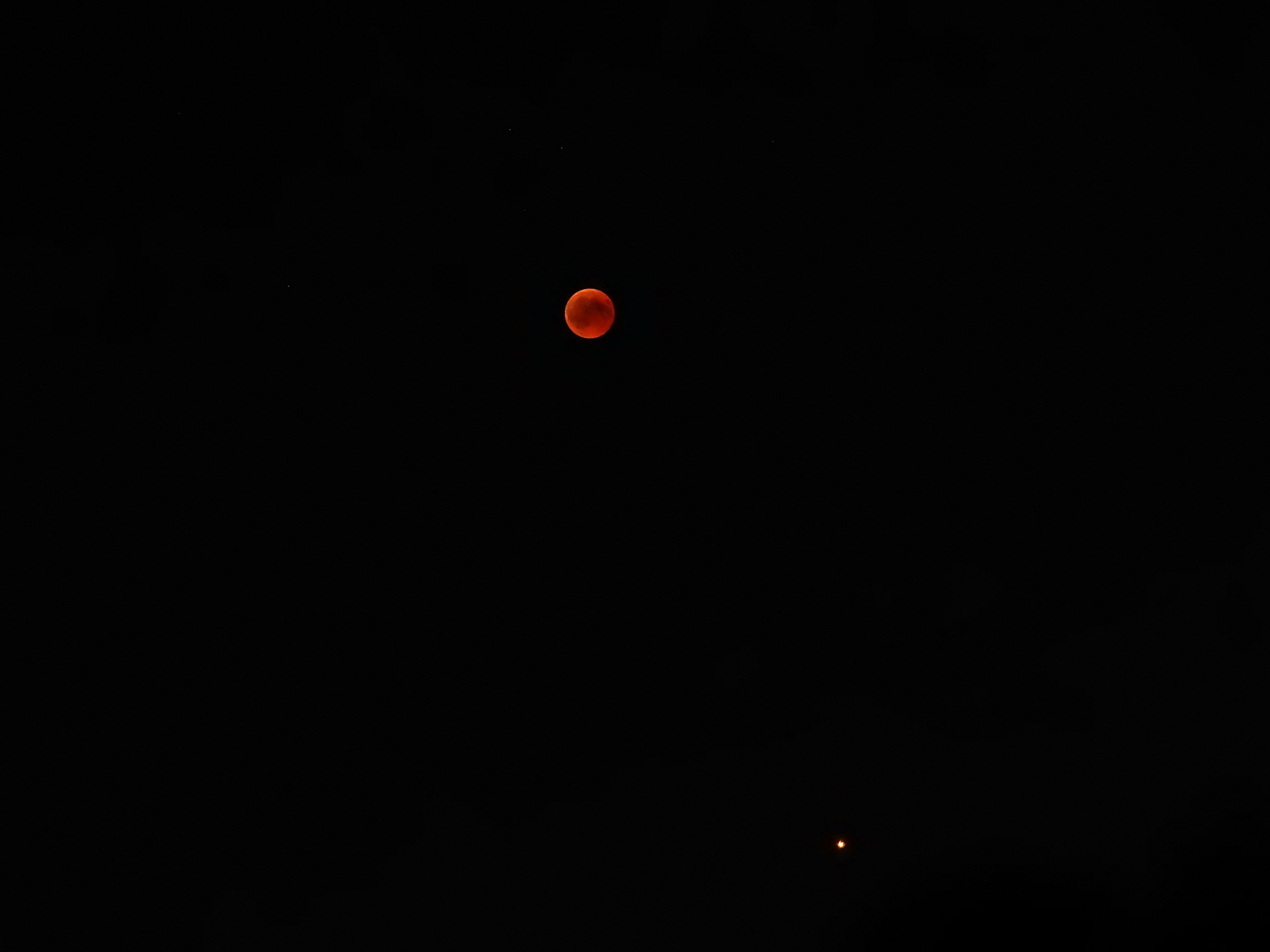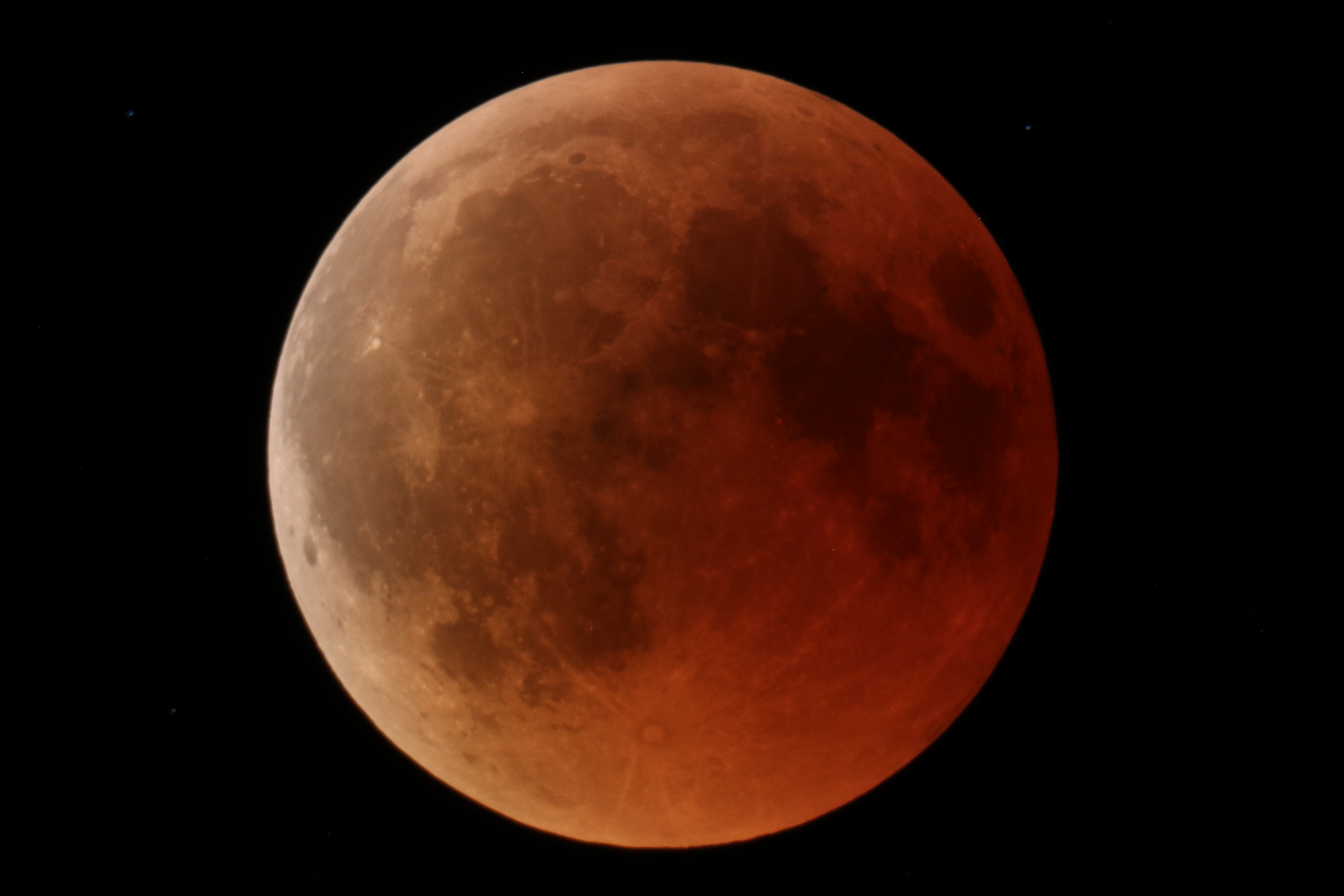On the 20th in the Americas and 21st of January in Europe and northern Africa, we have the pleasure of witnessing the Moon on the big stage, once again. As we sit in the front row, the Earth’s shadow will play a complementary role to center stage.
In contrast to the eclipse of Summer 2018, Europeans and North Americans will have to tough it out in the cold. With clammy fingers in the waking hours and next to the telescope, we will admire a fascinating, rusty-red Moon. However, bearing the cold temperatures will be rewarding, since this lunar eclipse will be one of the last, extremely visible eclipses in Europe for some time.
Here, you can learn more about the total lunar eclipse and some observation tips.
Getting up Early – Akin to Moving Mountains
So why do it? Why stand outside in the icy-cold, surrounded by snow and frost, while others are cuddled in their warm beds?
Easy! We cannot fight our fascination for astronomy. Astronomy is not something best experienced from your couch. Gazing at a photograph does not place us in the place it was taken, as well as being there in person. Which would you prefer? Listening to music on your smartphone or bouncing to live music with the stage only a hand
Why this Eclipse?
Our American friends will have the pleasure of seeing the eclipse during more comfortable hours of the night, while those of us further East will need to get up early. This eclipse will be one of the few, easily visible ones from Europe for several years and all of it will be visible from a comfortable height in the sky, so that the Moon will be observable from almost every village, city and garden – even with the bonus of a morning cup of joe in your hand. Who wants to drive to the middle of nowhere or to a mountain in the middle of the night?
The next chance to see a Lunar Eclipse will be a ways off: six years from now on the 7th of September 2025 (Our North American counterparts only need wait until 26th of May, 2021). So, this Lunar Eclipse in the early morning hours will be worth the work!
Location and Date
On the 20th around dusk in the Americas, leading into the 21st of January in the early morning hours in Europe and Africa, around 5 hours of a rusty-red Moon will grace the night sky. The visibility of this particular eclipse will stretch from the Pacific Ocean all the way to Eastern Europe. Here in Europe, the Moon will rise already in the Earth’s shadow.
This is hot phase, in which the Moon is hiding in Earthly shadow, also known as totality, makes the moon resemble a piece of hot iron initially. Eventually, our satellite will take on a brownish, rusty-red or copper color, making it impossible to look away.
For the best experiences, find yourself a nice dark area. The Moon’s normal brightness is not to be expected. In the Earth’s shadow, it will still glow faintly in the night sky and reflects only the refracted light, passing through the Earth’s atmosphere, from the sun back to us. Now our Moon will appear 25,000 times fainter than a bright, illuminated Moon.

That’s a good reason to find a dark spot or at least make sure you have an unimpeded view without street lights.
At 5:41 AM Get Outside, Europeans
3:35 AM CET (central European time) or 9:35 PM EST (20th of January) in North America is when the Moon enters the penumbra, but this phase is rather inconspicuous. Once the Moon enters the Umbra at 4:34 AM CET or 10:34 AM EST, Europeans and Americans will be able to see a real difference in our satellite’s color. Our lucky friends in California will be able to see the entry into the umbra already at 7:30 PST on the 20th of January.
Totality begins at 5:41 CET or 11:41 EST. In Europe, the Moon will have dropped in the sky by about 10°, but the sight will still be excellent. In comparison to the last Lunar Eclipse in Europe, then the Moon was already red by the time it reached 5° abover the horizon and reached a maximum of 16° before totality ended.
Phases of the Eclipse at a Glance
- Entry into the Penumbra 3:35 CET (21st of January) and 9:35 EST (20th of January)
- Entry into the Umbra 4:34 CET and 10:34 EST
- Begin of totality 5:41 CET and 11:34 EST
- Half-way point of the Eclipse 6:12 CET and 12:12 EST (21st of January)
- Exit of the Umbra 7:51 CET and 1:51 EST
- Exit of the Penumbra 8:50 CET and 2:50 EST
Roughly until 6:44 AM CET or 12:44 AM EST, we will be able to admire a rusty-red Moon with the naked eye, binoculars, or a telescope. Lunar photography during the Eclipse should also be a breeze, even with standard equipment.
How to Photograph the Lunar Eclipse
During the Eclipse, it will be worth the effort to photograph the moment. The good thing is, you will not need a whole lot of equipment. A tri-pod and a camera, or a small telescope with a camera mount should do the trick.
With a stable camera, you should be able to capture the Moon with the surrounding landscape. With an focal length of up to 200 mm and especially when the Moon is just above the horizon, you are sure to find photographing the event rewarding.
If you would like a close-up, in which the Moon takes up a third or half of the image, you will need a higher focal length of more than 500mm. In such a case, it will be difficult, if not impossible, to shoot a nice lunar picture. In the partial phases, short exposures will do – in the range of 1/100th and 1/10th of a second, while totality will require an exposure of several seconds. The drawback here will be a blurring effect of the Moon, as a result of the Earth’s rotation. With longer exposures and moderately sensitive cameras, consider using a tracking mount, in order to get a crisp photo of totality.
If you looking for a great telescope for a lunar eclipse, have a look at our Omegon Photography Scope 72/432 ED, which is a great instrument for nature and astrophotography at moderate focal lengths. The set-up is both a lens and a spotting scope, all in one.

The Lunar Eclipse of 2018 captured with a stabilized camera. Mars is visible below. Credit: Marcus Schenk
Photography Tips at a Glance
- Stable tri-pod or tracking mount, as well as a lens or a small telescope
- Recommendation: a camera with a cable or Bluetooth remote, as well as a timer
- The camera should feature a manual focus, allowing you refocus to see a crisp edge on the Moon
- The exposure should be manually configurable, or at least feature exposure correction
- Experiment with the aperture and ISO values – you have plenty of time to do so
For now, we say clear skies and enjoy! Until next time!

